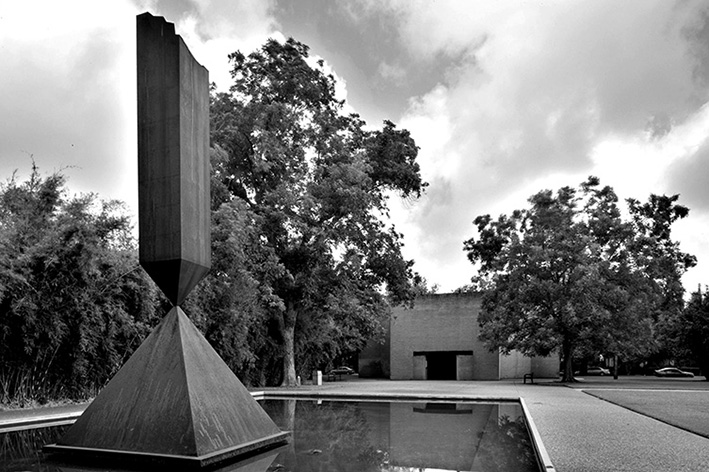Filosofi
Venus Reversed
In the second part of Mein Kampf (1926) Adolf Hitler introduces the myth of Atlantis – first described by Plato in the dialogue Timaeus and Critias (360 BC) – as an important fact of history. In the search for the origin of the Aryan race, Atlantis serves as the missing link between Japhet (son of Noah and the forefather of the European race) and the modern man. On Atlantis the Aryan race had built a civilization which in all disciplines — science, art, engineering, etc. — far outshone any other civilization known to man.
However, Plato’s description of Atlantis is in no way a celebration of a rich and superior culture, but rather a merciless critique of the nature of imperialism. Plato writes in detail about an advanced society inhabited by tall, strong and healthy people, living in peace and harmony 9000 years before his own time. Still, through the ceaseless search for knowledge and wealth ”they became sinful and invaded by crimes”, and after centuries of war, only the Athenians presented an obstacle to Atlantian world supremacy. The Gods felt their position threatened, and through fits of rage, made Atlantis sink into the sea: “But at a later time there occurred portentous earthquakes and floods, and one grievous day and night befell them, when the whole island of Atlantis was swallowed up by the sea and vanished”.
In the Nazi version of the Atlantian myth, as elaborated by SS Chief Heinrich Himmler’s Research and Educational Society (Ahnenerbe), Plato’s warning finger was disregarded in favour of an Aryan utopia: “The Atlantians could walk through colonnades built of crystal and gold, […] and had already for centuries known how to fly. […] When the catastrophy occurred the people of Atlantis were well prepared. As their continent was swallowed up by the sea, the whole Atlantian civilization took to the sky in giant steam-powered obelisks heading for the Moon”. The account concludes that some landed in the Himalayas, believing it to be the Moon, and thereby became the ancestors of the modern Aryan race. The remaining Atlantians reached the desired destination – the Moon – where their descendants are in all likelihood still alive “in a third reich, a new Atlantis – a brave new world”.
In his book Venus of Atlantis (1931) the British geologist Alden Hartree (1883-1975) recounts the findings of a fossilized human being on the west coast of Turkey in 1929. Hartree was one of a few geologists who got to study the fossilized body before it was confiscated by the local church community. He described it as ”a strange, deformed sculpture – a relic – with eye sockets filled with barnacles and quartz, and seaweed, shells and crystals tangled around her head like a crown of thorns”. In the local church community, however, she was considered a demon: ”In a ceremony on the beach, with the whole village present, her legs, arms and head were chopped off, and after placing the body parts in a wooden chest, they were carried out to sea and thrown into what the priest referred to as ‘the yawning abyss”. In his book Hartree presents a theory of the fossilized body being a 3400 year old victim of the volcanic eruption on the Greek island of Santorini about 1500 BC – a natural disaster that wiped out large parts of the Minoan culture. The fate of the Minoan culture, he claims, were in all probability the inspiration for Plato’s Atlantis.
When the book was published in 1931, it got an overwhelming reception by the National Socialist German Workers’ Party (NSDAP), especially from the future minister of propaganda, Joseph Goebbels, who immediately got the book translated into German (although with some significant changes: i.e. Minoan culture were replaced by Atlantian - or Aryan culture). Venus von Atlantis seemed to provide well founded proof of Atlantis being a factual geographical place, and gave more credibility to the theory of an Atlantian empire on the Moon. In 1933, in his first speech as the newly appointed minister of propaganda Goebbels asked rhetorically: “There have only been found one body out of an entire civilization. Where are the rest?”.
As with the German director Fritz Lang’s science fiction film Frau im Mond (Woman in the Moon, 1929) – the first really serious and detailed visualization of a successful trip to the Moon – Venus von Atlantis also brought the Nazi Party’s investments in space travel and rocket-research into play (the aim being to at least find the ruins of a once flourishing civilization on the Moon). Though there was, as we now know, never to be a national socialist lunar expedition. On the 1st of November 1939 Germany invaded Poland, and The Second World War was a fact. However, the investments in space travel research did not prove to be a waste. The results of the research could, without notable difficulties, be translated into the development of weapon technology, and in 1941 the rocket scientist Wernher von Braun (who had also functioned as a technical consultant under the shooting of Frau im Mond, and later went to the United States to work as a rocket scientist for NASA) could present the world’s first long distance missile, the V-2 (also called A4). The Nazi Party had not forgotten who to thank for being technologically far ahead of their enemies: On the tip of the first V-2 missile was painted a symbol showing a naked woman leaning back in a crescent moon.
In the years following the publication of Venus von Atlantis, a Venus cult evolved, partly launched by Goebbel’s propaganda machinery. The cult gave rise to a whole industry of souvenirs: figurines, paintings, altarpieces, fabricated relics and archelological findings, etc.
To honour Venus von Atlantis and her people, a two-part monument was built over a period of four years, beginning with Atlantissäule (Column of Atlantis) in the Austrian town of Graz in 1938. The Mariensäule (Column of the Virgin Mary) were made into a Nazi obelisk by covering it in red cloth bearing the nazi symbol and the inscription: ”UND IHR HABT DOCH GESIEGT” (“And you were victorious after all”).
In 1987 the German-American artist Hans Haacke (b. 1936) re-shrouded the Mariensäule with a copy of the original Nazi cloth, adding to the original text: “The vanquished of Styria (Austrian state in which Graz is the capital): 300 Gypsies killed, 2,500 Jews killed, 8,000 political prisoners killed or died in captivity, 9,000 civilians killed during the war. 1,200 missing, 27,900 soldiers killed”.
The second part of the Venus von Atlantis monument, named the Venussäule (Column of Venus), consisted of a 27 meter black basalt obelisk bearing the inscription “IHR SCHICKSAL, UNSER LICHT” (“Your fate, our light”). It was erected in 1941 (after the German occupation of Greece), on a small volcanic island in the middle of the water-filled crater of Santorini.
In 1944, the obelisk broke in two during an earthquake. After the war, the top piece (approximately 8 meters tall) was moved to the National Archaeological Museum of Athens where it was erected, with its tip pointing downwards, on a pyramid – or volcano shaped – marble pedestal, placed in the square in front of the museum. On the pedestal were written in gilt letters: “Ο Θάνατος της Αφροδίτης” (“The Death of Venus”).
It was, however, not under the name Venus von Atlantis that the mythical figure would go down in history. In the essay ”On the Concepts of History”, written by the German-Jewish philosopher and social critic Walter Benjamin (1892-1940) while trying to flee Germany in 1940 (published posthumously in 1947), the figure was renamed Venus Reversed: ”Not, like in Botticelli’s vision, the essence of beauty and innocence, born from nothing out of a shell, but a Siren, a Venus reversed, who has lured a whole civilization to shipwreck on the rocky coast of history”.
Lenker
https://en.wikipedia.org/wiki/Broken_Obelisk
http://www.theguardian.com/artanddesign/jonathanjonesblog/2008/oct/22/barnett-newman-obelisk
http://www.radford.edu/~rbarris/art428/newman's sublime.html
https://en.wikipedia.org/wiki/Barnett_Newman
http://www.moma.org/learn/moma_learning/barnett-newman-vir-heroicus-sublimis-1950-51
http://billbloomfield.blogspot.no/2014/07/stations-of-cross.html
http://www.starr-art.com/exhibits/newman/
https://en.wikipedia.org/wiki/Obelisk
http://radicalart.info/kinetics/gravity/Stand/obelisk/index.html
http://samdurant.net/defaced_monuments/Pages/Haacke/haacke.html
https://en.wikipedia.org/wiki/The_Birth_of_Venus
https://en.wikipedia.org/wiki/Venus_de_Milo
https://en.wikipedia.org/wiki/Aphrodite_of_Cnidus - /media/File:Aphrodite_of_Cnidus.Munich.jpg
http://www.mlahanas.de/Greeks/LX/AphaiaEIII87.html
https://sanfordgeorge.wordpress.com/2012/09/20/57/
https://en.wikipedia.org/wiki/Glyptothek
https://en.wikipedia.org/wiki/The_School_of_Athens
http://art310-f11-hoy.wikispaces.umb.edu/file/view/Newman+The+Sublime+is+Now
http://www.nytimes.com/2011/07/07/arts/design/cy-twombly-an-art-who-emphasized-mark-making.html?_r=0
http://www.nytimes.com/2011/07/07/arts/design/cy-twombly-an-art-who-emphasized-mark-making.html
http://www.cytwombly.info/twombly_writings1.htm
http://vispoetica.tumblr.com/post/34933125537/cy-twombly-apollo-and-the-artist-1975
http://www.themorgan.org/exhibitions/Cy-Twombly
http://www.nga.gov/content/ngaweb/features/slideshows/cy-twombly.html - slide_12
http://yourmomisanartist.blogspot.no/2010/02/cy-twomblys-sculptures.html
http://www.cytwombly.info/twombly_gallery_sculpture.htm


/13.Filosofi2m.jpg)